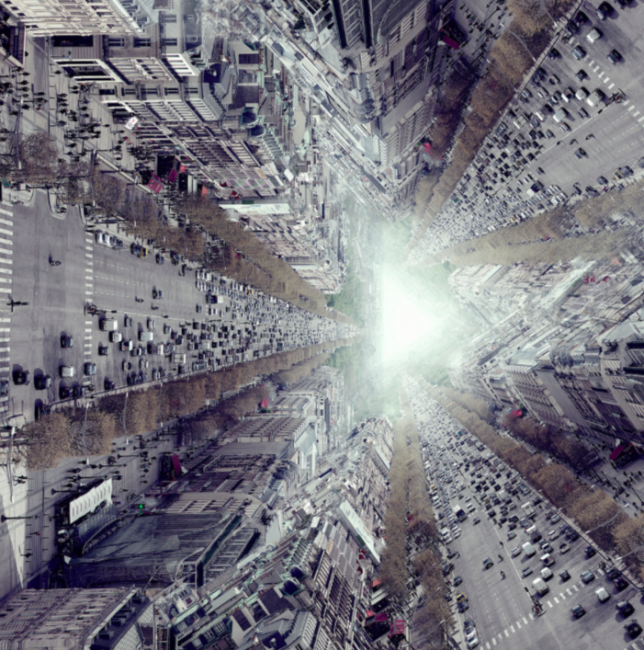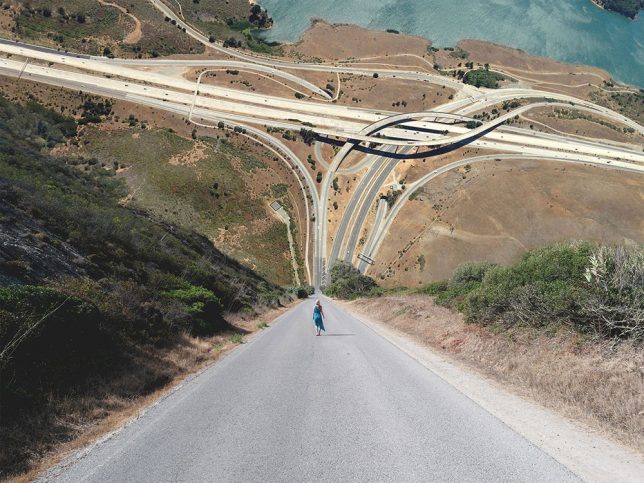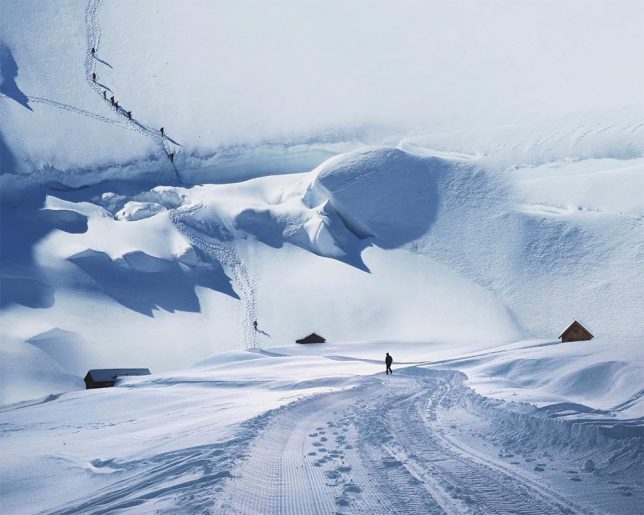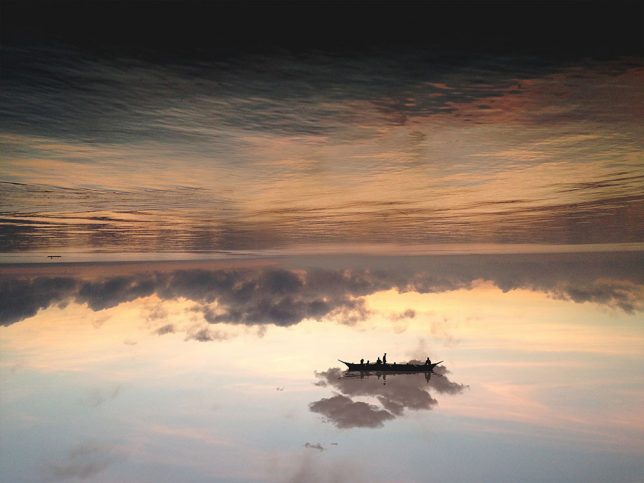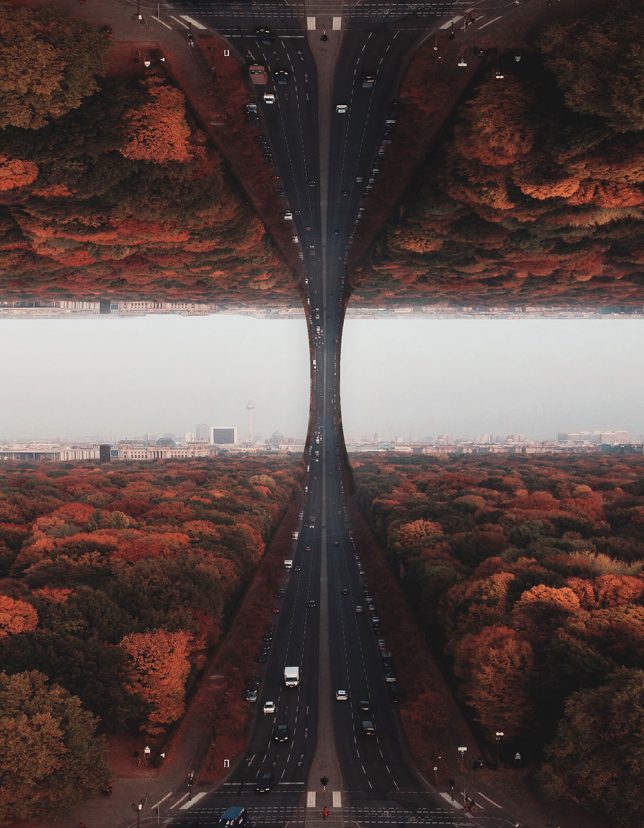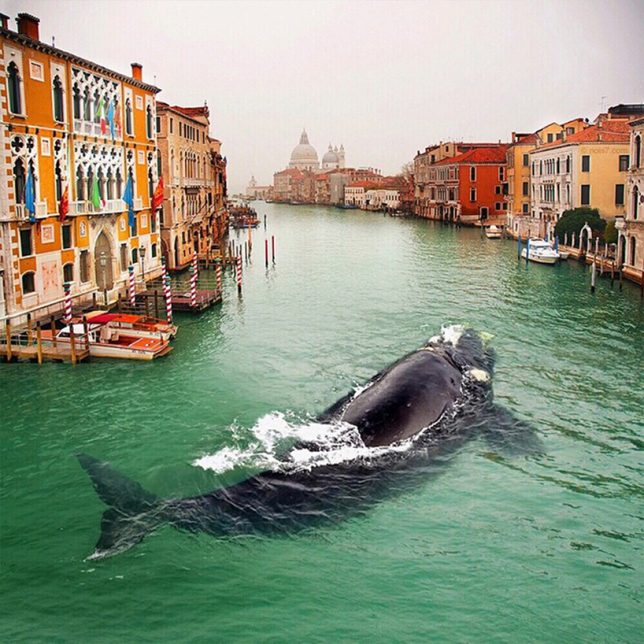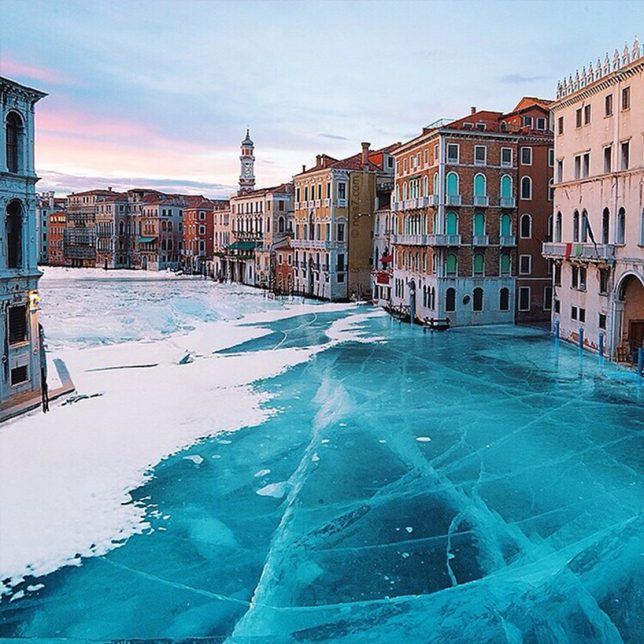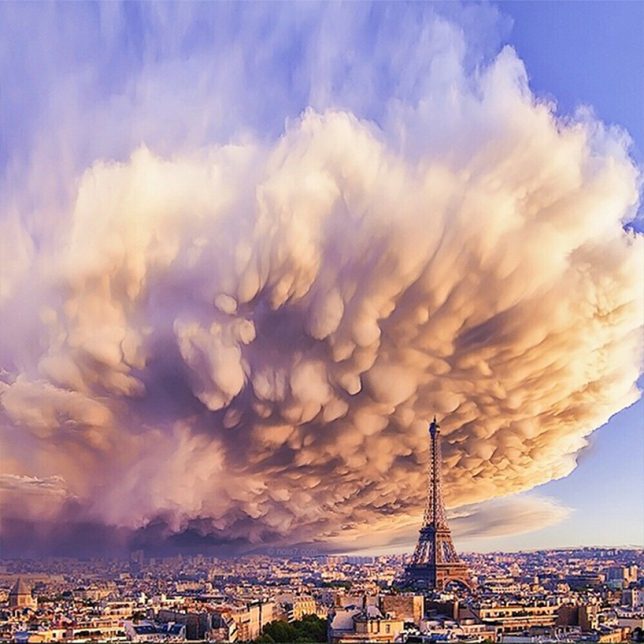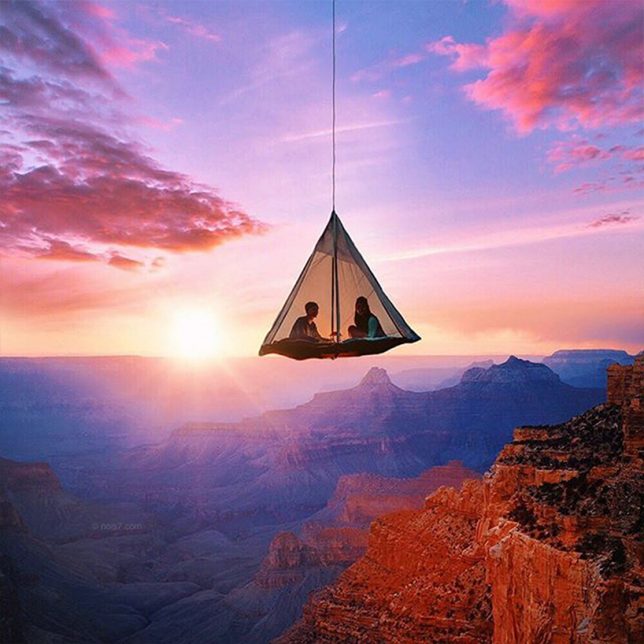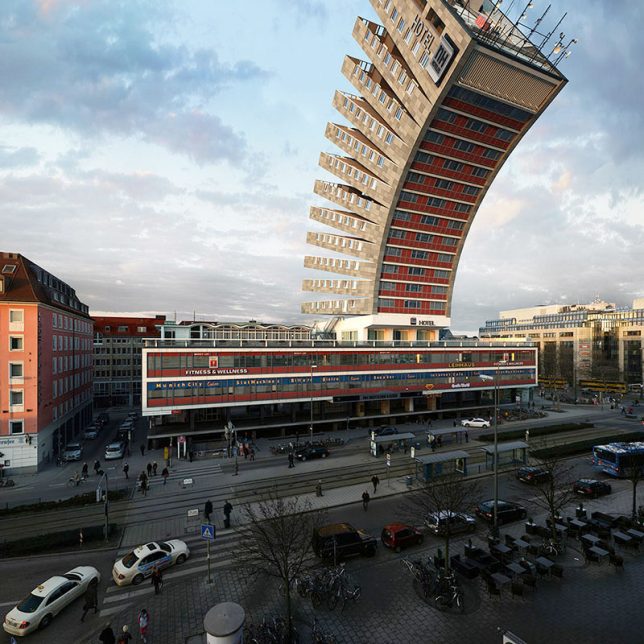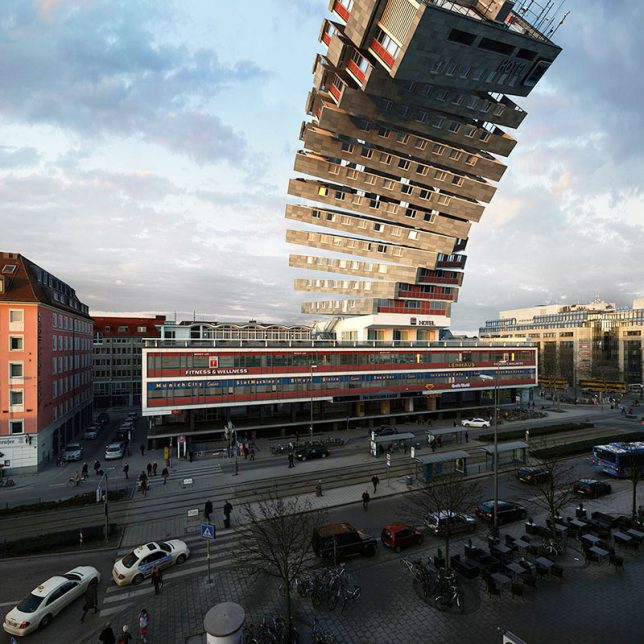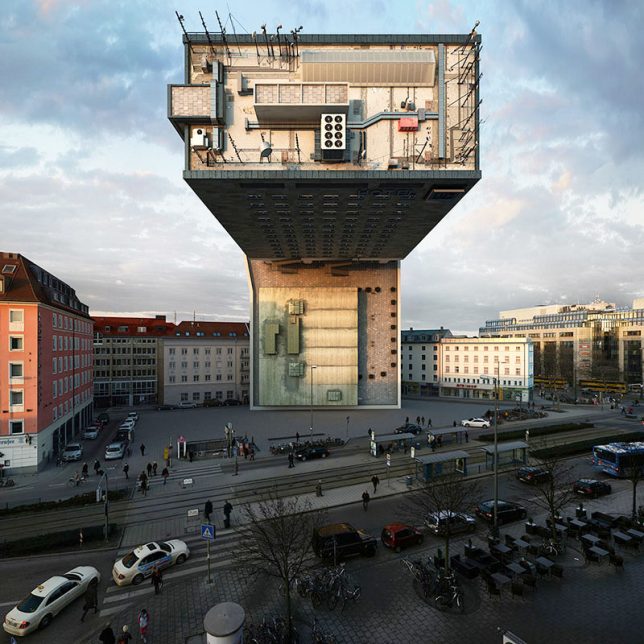Vortograph by Simon Gardiner
A city street becomes an endless tunnel ascending toward a tiny triangle of sky in this vortograph by Simon Gardiner, an abstracted form of photography created by photographing a scene through a geometric arrangement of mirrors. The artist says he was inspired by the movie ‘Inception,’ and had recently gained an interest in architectural deconstructionism. “It is characterized by ideas of fragmentation, an interest in manipulating ideas of a structure’s surface or skin, non-rectilinear shapes which serve to distort and dislocate some of the elements of architecture, such as structure and envelope. The finished visual appearance of buildings that exhibit the many deconstructionist ‘styles’ is characterized by a stimulating unpredictability and a controlled chaos. In these pieces I deconstruct and reconstruct photographs for a new visual reality.”
Surreal Landscapes by Laurent Rosset
Another artist bending and distorting landscapes uses slight shifts in perspective, drone shots, doubling and combining just two or three images to create surreal scenes that are sometimes so subtle, you have to look at them for a minute to realize what’s wrong. A couple in a canoe placidly floats straight into what seems to be a wall of water, roads loop around to continue upside-down in the sky and landscapes bend sharply into right angles with no care for the forces of gravity in these manipulations by Laurent Rosset.
Surreal Scenes by Robert Jahns
Another subtle series takes scenes that are familiar – like the canals of Venice – and adds a single surreal element that we know can’t be real. That element might be a whale, or water so frozen it’s like a new Ice Age has hit, or a sandstorm ominously pushing in on Paris. Artist Robert Jahns posts his altered images on Instagram as Nois7, where you can catch a new one just about every week.
Munich Building Reimagined by Victor Enrich
A single building in Munich gets digitally reconfigured 88 different ways in this series by photographer Victor Enrich, flipped upside down, twisted, rotated and bent as if it’s made of rubber. He took images from as many angles as possible and then used 3D software to replicate the geometry, materials and lighting so the building could be seen from impossible perspectives.
